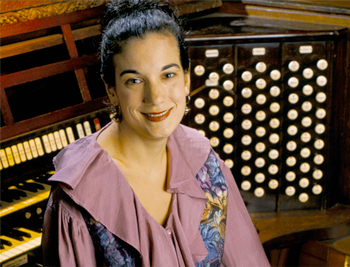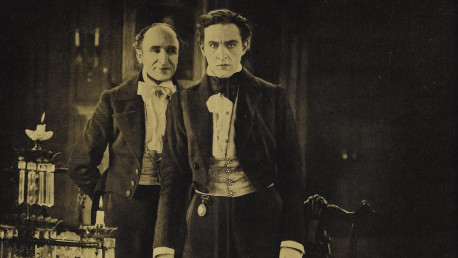by Robert Rollin

She mentioned that Stambaugh’s 1926 E.M. Skinner organ was the perfect contemporaneous instrument to use for the score, and that having been restored to its original condition, it would make the film come alive. She composed themes for each character, wrote out music for the first ten minutes, and improvised the rest.
As the film began, she launched into a thick, late 19th-century Lisztian organ texture typical of 1920s improvised silent movie accompaniments. Papadakos regularly used the instrument’s tremolos to create excitement. She also utilized complex rhythmic patterns that worked against metrical regularity, as well as chromatic harmonies and complex chord successions reminiscent of late Romantic music.
Papadakos’ frequent use of chromatic melodies also helped to support the on-screen tension. She regularly used the crescendo pedal to support twists of plot and related actions, and took advantage of pauses with on-screen conversation to intensify her accompaniment.

Millicent Carew and Miss Gina, the two female love interests, were added in an 1887 British stage version that appeared a year after Robert Louis Stevenson’s original novella. For Millicent, played by Martha Mansfield, Papadakos used warm, romantic harmonies and simple, straightforward rhythms to depict the girl’s naïve purity. For Miss Gina, the sultry Italian bar room dancer portrayed by Nita Naldi, Papadakos turned to popular and bluesy, jazz-related music.
Sir George Carew, Millicent’s father, played by Brandon Hurst, is an ambiguous personality. At first he seems to be concerned about his daughter’s engagement: here, the music was rather neutral. However, in the bar room scenes when his questionable morals appear, Papadakos mixed bluesy music with more formal Romantic harmonies.
The music intensified when Hyde murders Sir George. Here, Papadakos accompanied Hyde’s repeated strikes with abrupt tone clusters, producing one of the film’s most powerful moments. Finally, when Jekyll commits suicide using a poisoned ring, Papadakos added tension with dissonance, a powerful crescendo, and sheer volume. The music truly supported the dramatic moment.
Papadakos’ performance never wavered in its focus and skill. It was a tour de force, and the film ended with a standing ovation.
Published on ClevelandClassical.com November 8, 2017.
Click here for a printable copy of this article



